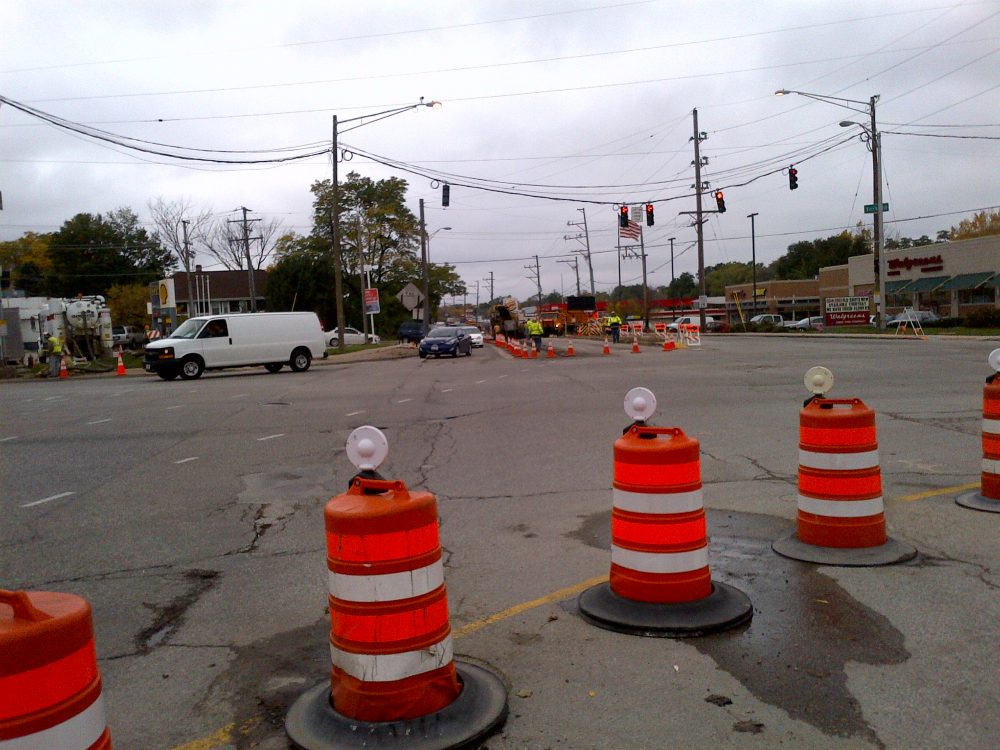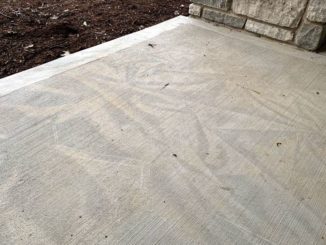
So as I’ve developed in the last 2 posts, traffic control on a construction project exposes just about everyone involved in the process to RISK. A motorcycle accident in 2008 sent me through the legal meat grinder and delivered me into the hands of a deposition. And it was not a fun experience.
I’ve been told by others, depending on the nature of the issue, that the deposition process can take days, even weeks. I had no idea what to expect, other than I’d have to swear to tell the truth by oath on a bible and answer lots of questions. Talk about walking down a long, dark hallway….
I got to the District HQ for a 1:00 pm scheduled session. The IDOT Resident Engineer was deposed before me. For whatever reason, he secured the services of an attorney. I never got the full story, but I presumed that, since the claimant could not sue the State of Illinois, it filed its claim against him as an individual. So I did my best to relax, reminded myself that I had more real-time knowledge of the situation than anyone in the room, and that all I had to do was tell the truth.
So in the room was a court reporter who would be typing AND tape recording the session, and 3 attorneys: 2 represented individual contractors and 1 who represented the claimant. I had received calls from both of the contractor attorneys months before, so I recognized their names and voices. I had yet to meet the claimants attorney. All 3 were much younger than I. I remember my first reaction to meeting all three of them: God, are these kids young! None of the three attorneys could have been older than 35. My confidence level jumped as I felt more-and-more like the true “expert” on the issue, both in familiarity and in seniority.
I was sworn in, and then the questions started. A lot of it was basic information about me, my role, our company’s role, the events of the day of the accident. Each attorney had his/her own chance to ask questions, and as I recall, there was never a time when I felt uncomfortable. Even though in my pep talk with Kevin, our president, he reminded me to avoid expounding and to keep my answers short, well, let’s just say that I had trouble with that. I truly felt it was necessary to see to it that all of the attorneys understood the circumstances that were in-place at the time of the accident. So I probably expounded on some questions more than I should have, but, I’d like to think that I added credibility to my testimony by being forthright with my responses.
The 2 contractors’ attorneys were very general & basic in nature: Their questions dug into the traffic control setup, did we inspect it, was there anything wrong, etc. I never felt that I was being put in a position of defense. Answering their questions felt more like an information exchange than an attack. I was able to tell them that we had been making regular traffic control inspections, that we were regularly submitting our inspection reports to the contractors for corrections and that there was nothing extraordinary about the traffic control setup in the vicinity of the accident.
When I was asked if all of the signage was in-place, I answered that the ROAD CONSTRUCTION AHEAD signs, MERGE and YIELD SIGNS were in-place (we had pictures) but that I could not confirm or deny if the UNEVEN PAVEMENT signs were up. As I’ve mentioned in my last 2 posts, I REALLY WISH I COULD HAVE ANSWERED THAT QUESTION. I vividly remember a rush through my veins when I gave that response, wondering what they all were scribbling in their notes. Would that answer be significant?
The last attorney to ask questions was the claimants. I remember she had a yellow legal pad that she had drawn a line down the center of the page. I noticed that, when the other attorneys were asking questions, she was constantly switching the side she was writing on: Left column, then right, then some more on the right side. I was fascinated, curious to know how she had setup her notes.
She had a lot of questions about the asphalt lip. She showed me a picture of some pavement that looked to be about a 12″ drop off, asking if I thought the picture was taken from the location where the accident happened. A 12″ lip? Nope. I had to tell her that she was wrong and that the 1-3/4″ lip was all that was there. “Well how do you know it was 1-3/4,” she asked. I said because that’s what the plans specified, we do spot measurements during asphalt placement and that we have to do a yield check at the end of the paving operation to confirm that the right amount of material was placed at the right thickness. I told her that the contractors don’t want to put asphalt down any thicker than they are supposed to since we won’t pay them the extra. She asked how much thicker might it have been, I remember telling her maybe an extra 1/8″ or so, but that would be about it. I think that my logical development of how big the lip actually did not bode well for her case….
As I recall, I think the entire process took about 2 hours. Everyone shook hands and packed their gear. Kevin told me that I was supposed to ask the court reporter for a copy of the transcript, but I had forgotten to ask. In hindsight, I REALLY wish I had because I would have liked to have done a post-mortem on myself to see how I did. I can say this: It wasn’t as bad as I thought it would be.
I called my boss, Dennis, from the car while driving home to share my thoughts on the proceeding. I was glad to have survived pretty-much unscathed. I thought it went well but I figured this wasn’t the last I heard on the issue.
I was wrong. It was the last time I heard of the issue. The motor cyclist dropped the claim. It silently went away: I never received any official news, everything surround the ordeal just kind of faded into the sunset….
TEACHING POINTS & LESSONS LEARNED
OK, so what did I learn from this 5-year course of events? Here are a few ideas to incorporate into your routines.
The Deposition Process Sucks – Absolutely Sucks
Mark My Words – I NEVER EVER want to have to go through the deposition process again! NEVER! EVER!
On face value, you could say that the potential of being in a lawsuit is all in a day’s work. “Well, hey, Bob, it’s OK, you went to the deposition during working hours, so you got paid, no biggie, right?” WRONG!!! Here’s the real deal: I can’t get the hours & hours & HOURS of time that I spent THINKING about the whole ordeal back. That time is lost. Life wasted. Gone.
Here’s the gig – The entire process requires a TON of mental fortitude. And I’m not talking about the actual deposition, I’m talking about the preparation. The Q/A, under oath, is un-nerving, yes, no doubt. But the time spent in thinking & rethinking, researching, contemplating thoughts like “Did we…” or “Did they…” or “Did I…” or Should I have…” will require hours of your time. And much of the time (at least in my case) was spent second-guessing how things happened and what could have been done to prevent the occurrence.
ACTION ITEM: Unfortunately, there isn’t one. You cannot avoid being summonsed. It’s a lose-lose proposition that is out of your control. Sorry.
Expect The Worst
The reality of the traffic control & construction is that, no matter how hard everyone involved with the project tries, accidents occur. Plan for it to happen.
Matthew 25:13
“…therefore, stay awake, for you know neither the day nor the hour.”
OK, so Jesus probably didn’t have to contend with work zones and arrow boards in Jerusalem, but he knew what he was talking about when it came to prophesy. And the same goes true for traffic accidents.
Put yourself in a position to anticipate an accident. Know your work zone(s). Check yourself: Anticipate a wreck in the various locations on your project. How does the location minimize the potential for damage / injury? Does the location conform to the Plans and Standards? Does the condition warrant notifying the client? How will your documentation hold up in a deposition or court if something did happen today?
Pictures = 1,000’s of Words
My biggest lesson from the I-55 accident was that I wish I had a picture looking down the ramp to confirm the signage that was in place at the time the cyclist dumped his bike. I took pictures of the vicinity, just not enough.
I promise you this: You can NEVER take enough pictures. In the “way back when” days when pictures had to be developed, printed & paid for, we “rationed” them: Pictures were taken to document special conditions, not taken as general work status shots. But now with digital, pictures are virtually free.
Take pictures. Keep them organized. Make them searchable by date. Don’t worry too much about file naming and lots of detailed descriptions. A year from now, when an inquiry is made, pictures will be the first place you go.
Video = 100,000’s of Words
I’ve recently implemented taking dashboard-level video of the job on my phone. I’ll drive the job and just take a simple dash-cam video of the job. It is a really nice way of capturing a bunch of as-built / as-configured information is a short amount of time. Granted, the files are GB’s big, so I’m judicious in taking them (like after a stage change is completed…).
Be Diligent
This is Big Tip #1. I swear by it. I live by it.
The world is made up of those who care and want to work their asses off to do a good job. And unfortunately, there are people who avoid work, avoid contributing and feel the need to game the system at the expense of society. Acknowledge that there are people out there looking to take advantage of you, your job & your situation. Expect them to surface. Expect them to challenge your integrity & professionalism. Prepare for them before they engage you.
Traffic control requires you to maintain a steady diet of watchfulness. You have to work at it. How do I do it? Every morning, the first task I have after our office start-up is to drive the site. It’s a habit. It’s a routine. It’s worthwhile. Developing a sense of what elements are in what position on a day-to-day basis takes time and practice. The more routine exposure you have to your site, the more likely you are to notice when things are out of place.
The problem is that, after a few drive-thru’s and inspections that you will have a tendency to become numb to what you see, and that it just becomes run-of-the-mill and mundane. That’s what a weak-minded engineer would do. Learn to pay attention. Train your mind to focus. Allow your intuition to “absorb” what’s right and what’s not. You are on-site working for the folks who pay the taxes to pay for the improvement, so do them a solid and work your ass off.
Don’t Be Bashful – Be Bold
This is Big Tip #2. And I’ve learned this over time, not by epiphany.
Early in my career, if I’d have taken a Personality Assessment, I’d have certainly been classified as a “Mediator” or a “Pacifist:” Always looking to make the glass half full, work to make sure that everyone liked me and that we all got along. Mistakes weren’t anyone’s fault, we always had good news to tell, and so on down the line.
Today, now that I’m pushing 50 and seemingly getting crustier with every passing day, I don’t hide anything – Call them like I see them. If I think you are wrong, I’ll tell you. If I think something is wrong, I’m not going to rationalize a way to think that it’s right. Whatever the case, I’m going to let you know about it.
Way back when, I’d have been concerned about sending a Contractor, or the client, bad news, or a Nasty-Gram. I didn’t want to upset the apple cart, or the job atmosphere, or set people or companies at odds with each other. But as I’ve aged in this business, I’ve matured. I’ve lost my filter. I’m not afraid to tell you the plain ‘ol truth. And if it hurts, tough shyt, it’s still the truth.
The climate in the industry, just like society, has changed drastically in the past 20 years. Everyone is looking to blame someone. Nobody wants to accept responsibility for their own actions anymore.
When things are wrong, they need to be made right. And as engineers, we have a DUTY to work towards getting them right. Don’t be afraid to advise the client when things are wrong. Put your observations in writing: An email works just fine. Do your daily reporting in writing. For me, IDOT has a standard form for traffic control inspections. We keep notes on lane configurations in our job diary. Let people know what you see when it doesn’t look right. And, work within your authority to make them right.
Look, if you hurt someone’s feelings in the process, or you piss-off someone in the food chain (and yes, it happens), don’t let it be a deterrent to taking action. They’ll get over it. Remind them that they won’t be the one’s having to answer a bunch of questions in a deposition when the problem manifests itself, YOU WILL. They won’t be coming to your house to help you prepare for the deposition. They won’t be helping you find inspection documents and pictures when you have to spend YOUR TIME and YOUR COMPANY’S TIME doing it. And they won’t be standing in your corner volunteering to help when the lawyers coming knocking. Been there, done that. Don’t waste MY TIME. Fix it. End of story.
Conclusions
You are going to hear more of my over-arching credos about life in this blog. There is no substitute for hard work. Dedication to the “craft” of engineering requires pain and suffering. It requires taking pride in your work, busting your ass and doing the best job you possibly can do. It requires you to Study, Study and then Study Some More. Be a student of your jobsite. Take the initiative to know what’s going on. Be accountable. And be willing to run towards the gunfire (euphemism, of course…) and take action. Then, when the time comes for you to have to give a deposition, if you’ve ended your workday with your head landing on the pillow without worry or regret about the work that you’ve done, nothing involved with a deposition will be able to penetrate your conscience. That’s the way I live.




Be the first to comment